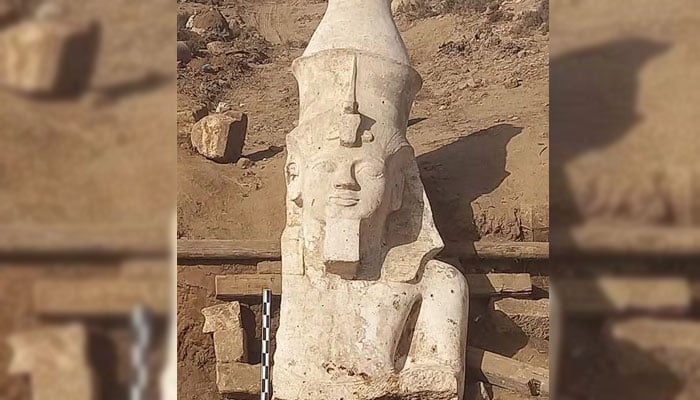Reuters reported that an archaeological mission led by Egyptian and US archaeologists uncovered a significant upper portion of a Pharoah Ramses II statue during excavations in the Egyptian city of Minya.
According to Egypt’s Tourism and Antiquities Ministry, the limestone block stands around 3.8 metres (12.5 feet) tall and shows a seated Ramses wearing a double crown and a headpiece capped with a royal cobra.
According to Bassem Jihad, the mission’s Egyptian team leader, the upper half of the statue’s back column has hieroglyphic writings honoring the king, one of ancient Egypt’s most powerful pharaohs.
Ramses II, often known as ‘Ramses the Great,’ was the third pharaoh of Egypt’s Nineteenth Dynasty, ruling from 1,279 to 1,213 BCE.
When joined with its lower portion, which was uncovered decades ago, the statue would measure approximately 7 metres.
El Ashmunein, located on the Nile’s west bank, was known as Khemnu in ancient Egypt and served as the regional capital of Hermopolis Magna throughout the Greco-Roman period.






